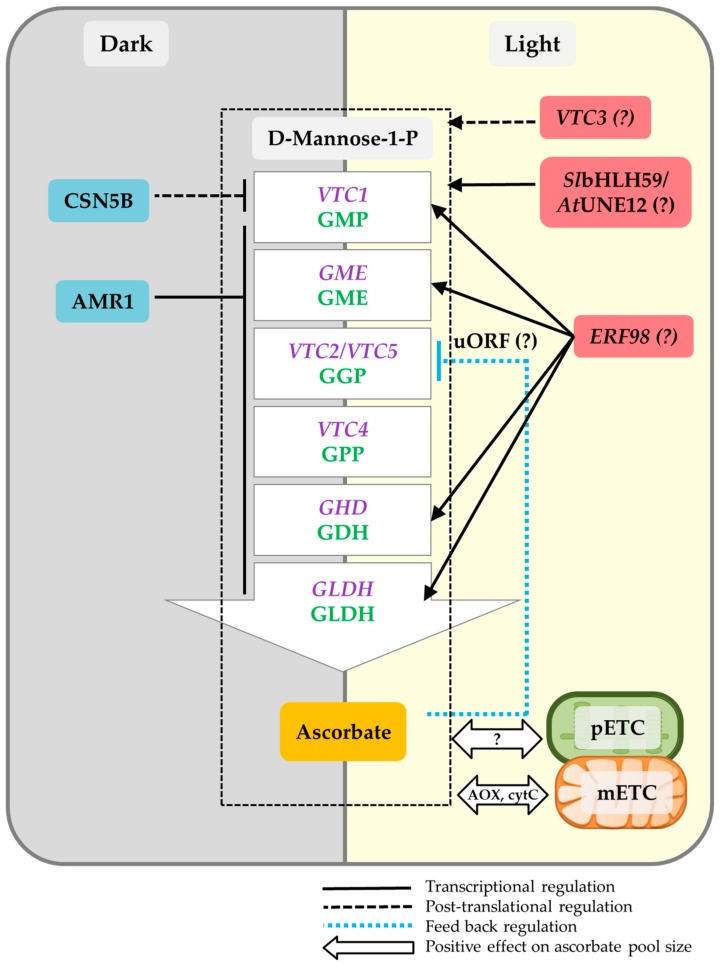Figure 2.
Overview of light regulation on ascorbate biosynthesis. Ascorbate biosynthesis is regulated transcriptionally by the ascorbic acid mannose pathway regulator 1 (AMR1), ethylene response factor 98 (ERF98), and Solanum lycopersicum basic helix–loop–helix (bHLH) transcription factor 59 (slbHLH59; tomato-specific). AMR1 has negative effects on GMP, GME, GGP, GPP, GDH, and GLDH in Arabidopsis. AMR1 expression decreases rapidly under light; thereafter, ascorbate levels increase. AtERF98 is the positive regulator of the ascorbate pathway by directly binding to the promoter of VTC1, and up-regulating the expression of VTC1, VTC2, GDH, and GLDH. The light-specific functionality of ERF98 has yet to be investigated. slbHLH59 activates the genes of the pathway in tomato fruits and increases ascorbate levels under the light. The close homolog of this transcription factor (TF) in Arabidopsis is unfertilized embryo sac 12 (UNE12), however, its role for ascorbate biosynthesis has yet to be investigated. Ascorbate undergoes post-translational regulation via constitutive photomorphogenic9-signalosome subunit 5B (CSN5B), VTC3, and the feedback regulation of VTC2. CSN5B binds to VTC1 and promotes its degradation under the dark. VTC3 is a putative kinase/phosphatase for light regulation of ascorbate. Feedback regulation of ascorbate is controlled by an unusual open reading frame (uORF), located upstream of the VTC2 gene. uORF functionality under the light needs further investigations. Ascorbate is also controlled via photosynthetic and mitochondria electron transport chains, designated as photosynthetic electron transport chain (pETC) and mitochondrial electron transport chain (mETC), respectively. This relationship is bidirectional.

